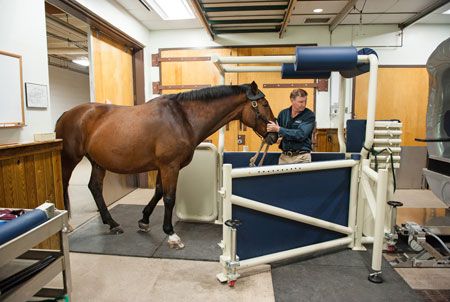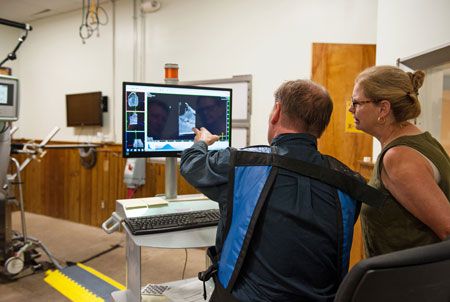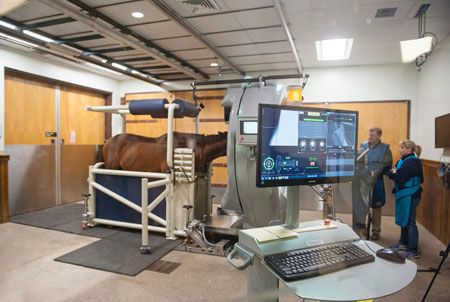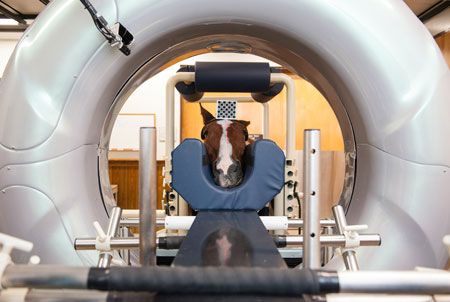Virginia Tech's equine center installs high-definition CT machine
Pegaso scanner reported to be first of its kind on the East Coast.
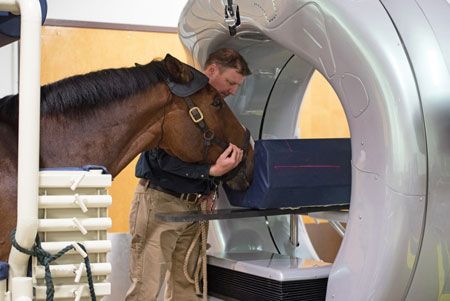
James Brown, clinical assistant professor of equine surgery, guides a horse into the new Pegaso High-Definition CT scanner at the Marion duPont Scott Equine Medical Center in Leesburg, Virginia.
Virginia Tech's Marion duPont Scott Equine Medical Center (EMC) is offering enhanced imaging capabilities for its equine patients thanks to a new Pegaso High-Definition Computed Tomography (CT) machine, which is the first of its kind on the East Coast, according to a university release. The unit allows veterinarians and staff to perform high-definition scans on horses that are standing or in recumbent positioning.
“We are very excited to offer this advanced technology for safer and clearer diagnoses of our equine patients,” says Mike Erskine, DVM, DABVP (equine), director of the equine center, in the release. The Equine Medical Center is a part of the Virginia-Maryland College of Veterinary Medicine at Virginia Tech.
The purchase of the scanner was made possible through a donation from the James Hale Steinman Foundation as well as additional supporting gifts. There are only a handful of scanners in the world-the others being in Germany, Scotland, Colorado and California, according to Virginia Tech officials.
The new technology provides 3D images at resolutions several orders of magnitude higher than a conventional CT but with much less radiation, the release states. Scans can be performed on the head and neck of horses while standing and on the distal limbs, stifle and vertebrae to C7-T1 while recumbent. It can also perform floroscopy.
“From my perspective, two aspects of this technology will be incredibly rewarding - the ability to image the stifle in three dimensions and the ability to image fractures, particularly complex fractures, in three dimensions for surgical repair,” says Jennifer Barrett, DVM, PhD, DACVS, DACVSMR, professor of equine surgery, in the release. “These additions greatly enhance our ability to provide the best treatment outcomes for orthopedic patients."
M. Norris Adams, DVM, DACVS, clinical assistant professor in equine lameness and surgery, notes that the CT scanner can pinpoint surgical sites that would not be possible with any other imaging modality. “The ability to view 3D images and subtract bone or soft tissue to concentrate on an area of interest with a single acquisition, which takes between 60 to 90 seconds to complete, has revolutionized our ability to diagnose and accurately identify disease and trauma sites,” Adams says in the release.
Other imaging technologies available at the EMC include digital radiography, nuclear scintigraphy, digital ultrasound, and standing MRI.
Click through the pages that follow to see more images of the scanner in action.
All images courtesy of Virginia Tech.
